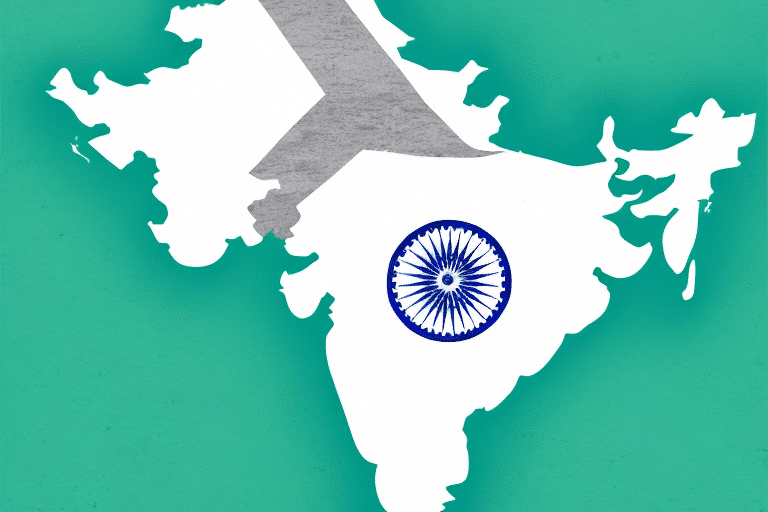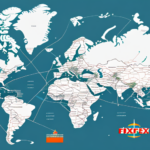The Importance of Efficient Shipping in Indian Ecommerce
Ecommerce has transformed the business landscape, enabling sellers to reach a global audience. In India, with its vast geography and diverse population, efficient shipping is pivotal for ecommerce success. According to Statista, the Indian ecommerce market was valued at approximately US$84 billion in 2023, and it continues to grow rapidly. Efficient shipping not only ensures timely delivery but also enhances customer satisfaction, leading to positive reviews and repeat business.
Businesses that excel in shipping logistics can gain a significant competitive edge. Timely and cost-effective delivery fosters customer trust and loyalty, which are crucial in a highly competitive market. Understanding the complexities of shipping in India, such as varying regulations across states and the logistical challenges posed by remote areas, is essential for any ecommerce venture looking to thrive.
Key Challenges in Ecommerce Shipping in India
Geographical Diversity and Infrastructure
India's diverse terrain, ranging from bustling metropolitan cities to remote rural areas, poses significant challenges for ecommerce shipping. Inadequate transport infrastructure in certain regions can lead to delays and increased shipping costs. Investing in a robust logistics network and partnering with local carriers can mitigate these challenges.
Regulatory and Compliance Issues
Different states in India have varying regulations and tax structures affecting ecommerce shipping. Navigating these legal complexities requires businesses to stay informed and compliant to avoid legal pitfalls. For instance, the Goods and Services Tax (GST) implementation has streamlined some aspects, but businesses must still be aware of state-specific rules.
Logistical Challenges
Handling returns, managing inventory across multiple warehouses, and ensuring the safe transit of products are ongoing logistical challenges. Efficiently managing these aspects is crucial for maintaining customer satisfaction and operational efficiency.
Shipping Methods and Carriers
Popular Shipping Options
In India, ecommerce businesses commonly use surface transport (road and rail) for domestic shipments due to its cost-effectiveness. Air transport is preferred for faster delivery of smaller and high-value items, while sea transport is typically reserved for international shipments.
- Prepaid Shipping: The customer pays for both the product and shipping upfront.
- Cash on Delivery (COD): The customer pays for the product upon delivery, a popular option in India due to the preference for cash transactions.
- Drone Delivery: Emerging as a cost-effective solution for delivering small packages in certain areas.
Choosing the Right Carrier
Selecting an appropriate shipping carrier involves evaluating factors such as shipping rates, delivery times, network coverage, and reliability. Prominent carriers in India include India Post, BlueDart, Delhivery, FedEx, and DHL.
It's essential to assess the carrier's reputation, track record, and customer reviews. Additionally, compatibility with the types of products being shipped, such as fragile or hazardous items, should be considered to ensure safe and efficient delivery.
Calculating Shipping Rates and Cost-effective Strategies
Factors Influencing Shipping Costs
Shipping rates in India are influenced by the weight and dimensions of the package, shipping distance, delivery timeframes, and carrier fees. Additionally, product-specific requirements like special handling or packaging can affect costs. For instance, oversized or heavy items incur higher shipping charges.
Strategies to Minimize Shipping Costs
- Negotiating with Carriers: Securing bulk shipping discounts can significantly reduce costs.
- Optimizing Packaging: Using lightweight and compact packaging materials helps lower shipping expenses.
- Third-party Logistics Providers: Leveraging 3PL services can offer economies of scale and specialized logistics expertise.
Offering multiple shipping options, such as standard, expedited, and overnight delivery, can cater to diverse customer needs while balancing cost and efficiency.
Packaging and Handling
Ensuring Product Safety
High-quality packaging is critical to protect products from damage during transit, especially given India's diverse weather conditions and varied terrain. Utilizing materials like corrugated boxes, bubble wrap, and void fillers can enhance product safety.
Accurate Measurements
Precise weight and dimension measurements are vital for accurate shipping rate calculations. Inaccurate measurements can lead to overcharging or undercharging, impacting revenue and customer trust.
Effective Labeling
Clear and accurate labeling with the recipient's address, contact information, and any special handling instructions ensures packages reach the correct destination without delays.
Managing Returns and Refunds
Establishing a Clear Returns Policy
A transparent returns policy helps manage customer expectations and streamline the returns process. This includes providing clear instructions for returns, specifying a reasonable return window, and ensuring prompt refunds.
Multiple Return Options
Offering various return methods, such as in-store returns, courier-based returns, or pickup services, enhances customer convenience and satisfaction.
Analyzing Return Data
Tracking and analyzing return reasons can provide insights into product quality issues, packaging improvements, and potential service enhancements, ultimately reducing return rates and increasing customer loyalty.
Future Trends in Indian Ecommerce Shipping
Advancements in Technology
The future of ecommerce shipping in India lies in the adoption of advanced technologies like automation, AI-driven logistics, and real-time tracking systems. These innovations can enhance efficiency, reduce costs, and improve the overall customer experience.
Sustainability Initiatives
With increasing awareness of environmental issues, sustainable shipping practices are becoming more important. This includes using eco-friendly packaging materials, optimizing delivery routes to reduce carbon emissions, and exploring alternative delivery methods like electric vehicles.
Growth of Omni-channel Logistics
Integrating online and offline logistics to provide a seamless shopping experience is a growing trend. This includes leveraging physical stores as distribution points and enhancing the synergy between online platforms and local delivery networks.
Conclusion: Key Takeaways for Ecommerce Shipping in India
Efficient ecommerce shipping in India requires strategic planning, robust logistics management, and adaptability to the dynamic market environment. Key takeaways include:
- Prioritize Efficient and Cost-effective Shipping: Optimize shipping methods and partner with reliable carriers.
- Accurate Shipping Calculations: Ensure precise measurements and transparent pricing.
- Invest in Quality Packaging: Protect products during transit to maintain customer satisfaction.
- Manage Returns Effectively: Implement clear policies and analyze return data to improve processes.
- Embrace Technological Advancements: Utilize automation and real-time tracking to enhance logistics.
- Focus on Sustainability: Adopt eco-friendly practices to meet environmental standards and consumer expectations.
As the Indian ecommerce market continues to expand, businesses that implement efficient shipping strategies and adapt to emerging trends will be well-positioned to achieve long-term success.




















